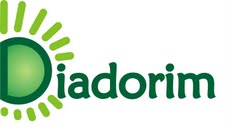OBTENCAO DE MODELO ANALITICO PARA PROPRIEDADE MECANICA DO CONCRETO DE AGREGADO LEVE VIA PROGRAMACAO GENETICA CARTESIANA
DOI:
https://doi.org/10.26512/ripe.v2i10.21733Keywords:
Programação Genética Cartesiana. Concreto de agregado Leve. Inteligência Computacional.Abstract
No concreto de agregado leve, e importante conhecer as suas propriedades mecânicas,como a resistência a compressão e o módulo de Young, dado que essas propriedades influenciam a resistencia e deformações das peças constituídas desse material. A relação entre os componentes do concreto e suas propriedades mecânicas e altamente nao-linear, e o estabelecimento de um modelo matematico abrangente ´e usualmente problematico. Nesse contexto, o presente trabalho tem como objetivo encontrar uma relação analítica entre propriedades do concreto de agregado leve e o m´odulo de Young (m´odulo de elasticidade), utilizando a t´ecnica de Programação Genética Cartesiana (PGC), a partir de operadores matem´aticos empregados como funções nodais da PGC. Ap´os a verificação do poder de generalização da metodologia utilizada neste trabalho, e feita uma comparação as relações matemáticas já existentes na literatura. Por fim, verificou-se que a metodologia proposta possui desempenho altamente satisfat´orio em comparaç˜ao aos resultados existentes.
Downloads
References
ABNT (1995). Agregados leves para concreto estrutural: especificaç˜ao. NBR NM 35. Associaç˜ao Brasileira de Normas T´ecnicas.
ACI (1999). Guide for structural lightweight aggregate concrete. ACI 213R-87. American Concrete Institute.
Alshihri, M. M., Azmy, A. M., and El-Bisy, M. S. (2009). Neural networks for predicting compressive strength of structural light weight concrete. Construction and Building Materials, 23(6):2214 ”“ 2219.
Andrade, J. J., Fonseca, L. G. d., Campos, L. C. D., Farage, M. C. R., and Barbosa, F. d. S. (2016). Aplicação do sistema neuro-fuzzy anfis na previsão de propriedades mecânicas do concreto de agregado leve. XII Simp´osio de Mecˆanica Computacional.
Andrade, J. J., Fonseca, L. G. d., Farage, M. C. R., and Barbosa, F. d. S. (2015). Aplicaç˜ao de m´etodos de inteligˆencia computacional para a previs˜ao de propriedades mecˆanicas do concreto de agregado leve. XXXVI Iberian Latin-American Congress on Computational Methods in Engineering.
Bogas, J. A. and Gomes, A. (2013). Compressive behavior and failure modes of structural lightweight aggregate concrete ”“ characterization and strength prediction. Materials Design, 46:832 ”“ 841.
Duan, Z., Kou, S., and Poon, C. (2013). Using artificial neural networks for predicting the elastic modulus of recycled aggregate concrete. Construction and Building Materials, 44(0):524 ”“532.
EN 1992-1-1, 1992 (2005). EN 1992-1-1 Eurocode 2: Design of concrete structures - Part 1-1: General ruels and rules for buildings, Brussels. EN, CEN.
Kasperkiewicz, J., Racz, J., and Dubrawski, A. (1995). Hpc strength prediction using artificial neural network. Journal of Computing in Civil Engineering, 9(4):279”“284.
Ke, Y. (2008). Characterization of the mechanical behavior of lightweight aggregate concretes: Experiment and modelling. PhD thesis, PhD. Thesis, Universit´e de Cergy-Pontoise.
Miller, J. and Turner, A. (2015). Cartesian genetic programming. In Proceedings of the Companion Publication of the 2015 Annual Conference on Genetic and Evolutionary Computation, GECCO Companion ’15, pages 179”“198, New York, NY, USA. ACM.
Miller, J. F. (1999). An empirical study of the efficiency of learning boolean functions using a cartesian genetic programming approach. In Proceedings of the Genetic and Evolutionary Computation Conference, volume 2, pages 1135”“1142.
Miller, J. F. and Thomson, P. (2000). Cartesian genetic programming. In Genetic Programming, pages 121”“132. Springer.
Miller, J. F., Thomson, P., and Fogarty, T. (1997). Designing electronic circuits using evolutionary algorithms. arithmetic circuits: A case study.
Neville, A. (2015). Propriedades do Concreto - 5a Edic¸ ˜ao. Bookman.
Ni, H.-G. and Wang, J.-Z. (2000). Prediction of compressive strength of concrete by neural networks. Cement and Concrete Research, 30(8):1245 ”“ 1250.
Nilson, A. H., Martinez, S., et al. (1986). Mechanical properties of high-strength lightweight concrete. In Journal Proceedings, volume 83, pages 606”“613.
Papadakis, V. and Tsimas, S. (2002). Supplementary cementing materials in concrete: Part i: efficiency and design. Cement and Concrete Research, 32(10):1525 ”“ 1532.
Schwefel, H.-P. (1965). Kybernetische evolution als strategie der experimentellen forschung in der str¨omungstechnik. Master’s thesis, Technical University of Berlin.
Souza-Barbosa, F. d., Resende-Farage, M. C., Lage-Bonif´acio, A., Beaucour, A.-L., and Ortola, S. (2015). A methodology to obtain an analytical formula for the elastic modulus of lightweight aggregate concrete. DYNA, 82:98 ”“ 103.
Turner, A. J. and Miller, J. F. (2015). Introducing a cross platform open source cartesian genetic programming library. Genetic Programming and Evolvable Machines, 16(1):83”“91.
Zhang, M. H. and Gjvorv, O. E. (1991). Mechanical properties of high-strength lightweight concrete. Materials Journal, 88(3):240”“247.
Downloads
Published
How to Cite
Issue
Section
License
Given the public access policy of the journal, the use of the published texts is free, with the obligation of recognizing the original authorship and the first publication in this journal. The authors of the published contributions are entirely and exclusively responsible for their contents.
1. The authors authorize the publication of the article in this journal.
2. The authors guarantee that the contribution is original, and take full responsibility for its content in case of impugnation by third parties.
3. The authors guarantee that the contribution is not under evaluation in another journal.
4. The authors keep the copyright and convey to the journal the right of first publication, the work being licensed under a Creative Commons Attribution License-BY.
5. The authors are allowed and stimulated to publicize and distribute their work on-line after the publication in the journal.
6. The authors of the approved works authorize the journal to distribute their content, after publication, for reproduction in content indexes, virtual libraries and similars.
7. The editors reserve the right to make adjustments to the text and to adequate the article to the editorial rules of the journal.









